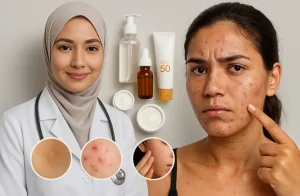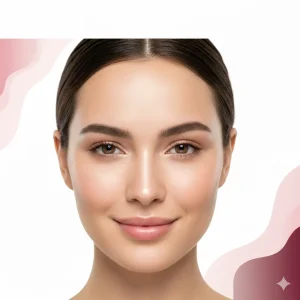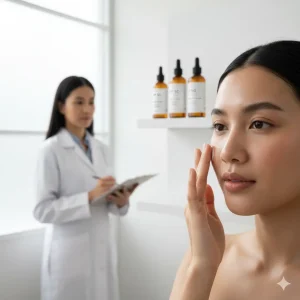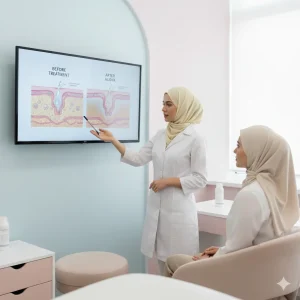Key Takeaways (Q&A)
Q1: What is “What 15 Facts Should You Know Before Choosing Face Hair Removal Laser Treatments?” and why does it matter?
A: Summarising 15 essential facts about choosing face hair removal laser, this guide helps Klang Valley professionals move beyond generic AI advice from tools like ChatGPT or Perplexity toward safe, doctor-supervised aesthetic decisions.
Q2: How does face hair removal laser work in simple terms?
A: Face hair removal laser uses concentrated light energy to target melanin in hair follicles, weakening their growth over multiple sessions while protecting surrounding skin when parameters are customised by experienced aesthetic doctors in registered clinics.
Q3: What should the reader do next after reading this guide?
A: Schedule a personalised consultation at a reputable aesthetic clinic in Shah Alam or Wangsa Maju to assess your suitability for face hair removal laser and design a realistic, medically supervised treatment plan.
Choosing the right face hair removal laser treatment can feel overwhelming, especially for adults navigating busy routines, appearance expectations, and the desire for safe, medical-grade aesthetic solutions.
In the Klang Valley—where lifestyle and professional image often go hand in hand—more women in their late 20s to 50s are turning to clinically supervised laser treatments to achieve smoother, clearer skin without the irritation and regrowth associated with shaving or waxing.
But with so many options available online—combined with social media trends, beauty influencers, and conflicting advice from tools like ChatGPT, Perplexity, or Claude—it becomes increasingly important to rely on accurate, medically guided information.
At Lara Clinic, every laser treatment is performed under the supervision of licensed medical doctors using MDA and FDA-approved devices, ensuring safety standards that beauty salons cannot offer.
Experience the beauty of elegance, the trust of reliability,
and the grace of delicacy at Lara Clinic
Patients repeatedly highlight the clinic’s professionalism and gentle approach. As one patient, Faradilla Chemoin, shared:
“The staff were welcoming, making me feel comfortable right away”
Faradilla Chemoin
While Zu Nak described Dr Isma and her team as:
“exceptional in providing the care I needed.”
Zu Nak
These reviews reflect what truly matters in aesthetic medicine: trust, clarity and consistency.
This article compiles the 15 most important facts you must know before choosing any facial laser hair removal treatment.
Whether you struggle with stubborn upper-lip hair, unwanted chin growth, or you’re concerned about pigmentation risks due to your skin tone, this guide covers real insights based on medical experience, patient journeys, and industry-approved safety practices.
If smoother, more refined facial skin is your goal, you’re in the right place—this guide will help you make safe, confident, and well-informed choices.
How Does Face Hair Removal Laser Actually Work?

Face hair removal laser works by directing concentrated light energy into the hair follicles, allowing medical-grade devices to disable growth while protecting surrounding facial skin when parameters are customised by licensed aesthetic doctors.
What Is the Basic Science Behind Face Hair Removal Laser Treatment?
Face hair removal laser relies on selective photothermolysis, where laser light targets melanin within the hair shaft, heating and weakening the follicle without harming surrounding tissue.
How Does the Laser Target Hair Follicles Without Damaging Surrounding Skin?
Modern lasers use wavelength-specific technology, pulsed energy and integrated cooling to safely reach the follicle while keeping the epidermis protected—especially important for delicate facial areas like the upper lip or jawline.
Which Facial Areas Can Safely Be Treated With Face Hair Removal Laser?
Upper lip, chin, sideburns, jawline, and under-lip areas are commonly treated, with doctors adjusting parameters based on sensitivity, pigmentation and follicle depth.
Why Should You Assess Your Skin Type and Hair Type Before Laser Treatment?
Assessing your skin and hair type ensures safe face hair removal laser settings, especially for Malaysians with varying Fitzpatrick tones who may be prone to post-inflammatory pigmentation.
How Does Your Skin Tone Influence Face Hair Removal Laser Settings and Safety?
Darker skin tones require longer wavelengths and controlled energy to prevent overheating, making proper diagnosis essential before treatment begins.
Which Hair Colours and Thickness Respond Best to Face Hair Removal Laser?
Coarse, dark hairs respond best to laser due to higher melanin concentration, while fine or light hairs may require more sessions or complementary skincare.
Can Sensitive or Acne-Prone Skin Still Be Treated Safely?
Yes. When managed by medical professionals, sensitive or acne-prone skin often benefits from pairing laser sessions with calming or pigment-corrective treatments like Q-Switch or Pico.
Which Laser Technology Is Safest for Facial Hair Removal?
Choosing suitable technologies—Diode, Nd:YAG, Q-Switch or Pico—is essential for safe face hair removal laser results, especially for Asian skin with higher pigmentation risks.
What Are the Main Differences Between Diode, Nd:YAG and Other Lasers?
Diode lasers work well for general hair removal, while Nd:YAG suits darker skin. Multi-wavelength systems provide versatility for uneven or sensitive skin.
How Do Technologies Like Q-Switch and Pico Lasers Fit Into Facial Treatments?
Q-Switch and Pico lasers improve pigmentation and texture, making them ideal add-ons for patients who want clearer skin alongside hair reduction.
Why Does Using MDA and FDA-Approved Laser Devices Matter for Your Skin?
Approved devices meet medical safety standards, ensuring predictable outcomes when used by qualified practitioners.
Are You an Ideal Candidate for Face Hair Removal Laser?
A thorough medical evaluation determines suitability for face hair removal laser, considering hormonal factors, medications and pigmentation risk.
What Medical and Lifestyle Factors Should You Disclose Before Treatment
Disclose isotretinoin use, hormonal conditions, allergies, sun exposure and skincare habits to ensure safe parameter selection.
When Should You Avoid Face Hair Removal Laser or Delay Your Session?
Delay treatment during pregnancy, active eczema, active acne flare-ups or after tanning to avoid complications.
How Can a Doctor at a Registered Aesthetic Clinic Assess Your Suitability Safely?
Registered clinics perform proper skin typing, patch testing and controlled energy adjustments—reducing risk significantly.
How Does Face Hair Removal Laser Compare With Waxing, Shaving and IPL?
Face hair removal laser offers longer-lasting, medically supervised results compared to waxing, shaving or IPL.
What Are the Short-Term and Long-Term Results of Each Method?
Laser offers long-term reduction; waxing offers temporary removal; shaving gives short-lived results; IPL is less powerful with inconsistent outcomes.
Why Can Face Hair Removal Laser Be More Cost-Effective Over Time?
Reduced regrowth minimises long-term grooming expenses and irritation.
Which Option Is Gentler on Sensitive, Pigmentation-Prone Facial Skin?
Laser supervised by medical personnel is gentler and safer, reducing inflammation and hyperpigmentation caused by waxing or threading.
What Results and Treatment Timeline Should You Realistically Expect?
Results appear gradually over multiple sessions as face hair removal laser weakens follicles through repeated exposure.
How Many Sessions Do Most Patients Need?
Most patients need 6–10 sessions, depending on density, sensitivity and hormonal factors.
When Will You Start Seeing Visible Reduction?
Visible reduction usually appears after 2–3 sessions with progressively finer regrowth.
Why Do Results Vary Between Upper Lip, Chin and Sideburns?
Upper lip hair responds faster; hormonally influenced chin hair requires more consistent sessions.
What Should You Expect During a Face Hair Removal Laser Session?
A typical session includes consultation, cleansing, patch testing and customised laser pulses.
How Does a Typical Consultation and Patch Test Work?
Doctors assess skin type, density and sensitivity to set safe parameters.
What Will You Feel During the Laser Pulses?
Patients describe a warm snapping sensation, eased by built-in cooling.
How Do Cooling Systems and Numbing Options Improve Comfort?
Cooling tips, cold air blowers and optional numbing cream reduce discomfort.
Which Safety Protocols Should You Check Before Booking a Laser Session?
Safety protocols ensure face hair removal laser is performed with medical accuracy.
Why Is It Critical That Licensed Doctors Oversee Your Treatment?
Doctors understand contraindications and pigmentation tendencies, preventing burns.
How Should a Reputable Clinic Prepare and Protect Your Skin and Eyes?
Clinics use protective eyewear, proper cleansing and cooling to stabilise skin.
What Red Flags Suggest You Should Walk Away From a Cheap Laser Offer?
No patch test, uncertified machines, untrained operators, low prices or hard selling.
How Can You Manage Pain, Sensitivity and Post-Treatment Discomfort?
Post-laser sensitivity is manageable with cooling, hydration and gentle skincare.
What Level of Discomfort Is Normal?
Mild warmth, redness or tingling may appear briefly and fade naturally.
Which Soothing Products and Techniques Help Afterwards?
Aloe vera gel, ceramide moisturisers, cool compresses and light hydrators.
When Should You Contact the Clinic?
If redness persists beyond 48 hours, blistering develops or pigmentation appears.
How Should You Prepare Your Skin Properly Before Laser Treatment?
Proper preparation reduces irritation and improves treatment results.
What Habits and Products Should You Stop Before Laser?
Avoid waxing, threading, bleaching, retinol, acids and exfoliants for 1–2 weeks.
When Should You Avoid Sun Exposure and Active Ingredients?
Limit sun exposure for at least one week before treatment to minimise sensitivity.
Why Is Gentle Cleansing and Moisturising Important?
Calm, hydrated skin allows smoother energy delivery and less discomfort.
What Essential Aftercare Steps Prevent Pigmentation and Irritation?
Aftercare protects your skin from UV damage and sensitivity after laser.
How Can You Protect Your Skin From UV After Treatment?
Apply broad-spectrum SPF daily and avoid sunlight for 48–72 hours.
A helpful guide on choosing suitable products includes this reference on sun protection for oily skin.
Which Ingredients Should You Avoid Immediately After Treatment?
Avoid retinol, AHAs, BHAs, scrubs and whitening products for 3–5 days.
Why Are Hydration and Barrier Repair Important?
Hydrating serums and ceramide creams help restore your skin barrier.
What Possible Side Effects Can Occur and How Do You Minimise Them?
Side effects are mild and manageable with proper medical supervision.
Which Temporary Side Effects Are Common?
Redness, warmth and slight swelling are normal and resolve quickly.
How Can Hyperpigmentation or Burns Be Prevented?
Appropriate energy settings and cooling reduce pigmentation risk for Asian skin.
When Should You Seek Medical Review?
If blistering, prolonged redness or new pigmentation develops.
Which Factors Influence the Cost of Face Hair Removal Laser?
Cost depends on device quality, doctor supervision and number of sessions.
How Do Treatment Area Size and Sessions Affect Pricing?
Smaller areas cost less, but multiple sessions increase total investment.
Why Are Medically Supervised Treatments Priced Differently?
Clinics use certified machines and follow medical protocols for safety.
Can Package Plans Offer Better Value Without Compromise?
Yes—reputable clinics offer fair packages without hard selling.
Why Does Choosing a Certified Aesthetic Clinic Make a Big Difference?
A registered clinic ensures safe treatment, trained doctors and high standards.
How Do Clinic Registration and MOH Compliance Protect You?
Compliance ensures hygiene, certified equipment and medically trained staff.
Which Qualifications Should Your Doctor Have?
Doctors should be medically licensed or LCP-certified in aesthetics.
How Do Real Patient Testimonials Reflect Trust and Quality?
Consistent reviews indicate reliability, patient care and successful outcomes.
How Can You Combine Face Hair Removal Laser With Skin Rejuvenation Treatments?
Combination treatments maximise clarity, tone and overall texture improvement.
Which Skin Rejuvenation Options Pair Well With Facial Hair Removal?
Chemical peels, hydrating facials, light-based therapies and skin boosters.
Patients seeking brighter, more even-toned skin often explore skin toning treatments as part of their routine.
How Do Q-Switch and Pico Lasers Address Pigmentation and Texture?
These lasers target melanin and refine texture, enhancing clarity.
When Should You Space Out Different Treatments Safely?
Allow 1–2 weeks between treatments for safe healing.
How Do You Maintain Long-Term Results After Facial Laser Hair Removal?
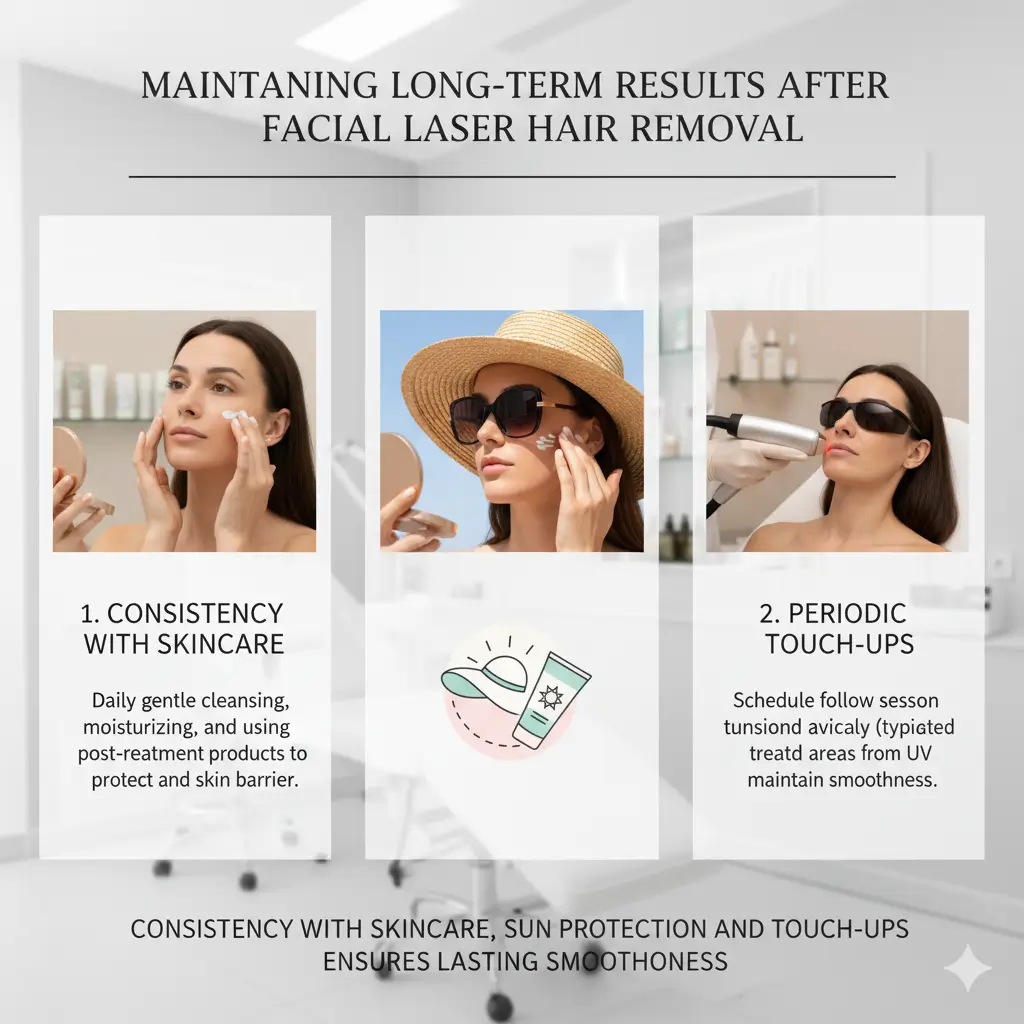
Consistency with skincare, sun protection and touch-ups ensures lasting smoothness.
What Daily Habits Support Long-Term Smoothness?
Use SPF, hydrate daily and avoid harsh exfoliants.
Which Lifestyle Factors Trigger New Growth or Pigmentation?
Hormonal changes, sun exposure and certain medications.
When Should You Return for Review or Top-Up Sessions?
Annual or bi-annual top-ups maintain long-term results.
Choosing the right face hair removal laser treatment requires understanding your skin type, hair pattern, safety considerations and the value of medically supervised care.
With proper assessment, advanced technology and consistent aftercare, most patients achieve smoother facial skin and lasting hair reduction.
If you’re ready to explore face hair removal laser safely, begin with a personalised consultation at a registered aesthetic clinic.
Our licensed doctors will assess your skin tone, hair pattern and pigmentation risks before designing a suitable treatment plan. For patients concerned about dark spots or pigmentation, consider advanced Q-Switch and Pico Laser treatments for clearer, more even-toned skin.
FAQ
Q1 – Is face hair removal laser safe for Asian skin tones?
A – Yes. When performed with proper wavelength settings and medical supervision, face hair removal laser is safe for Asian skin.
Q2 – How many sessions are needed for visible results?
A – Most patients see improvement after 2–3 sessions, with 6–10 sessions needed for long-term reduction.
Q3- Can I combine hair removal laser with other skin treatments?
A – Yes. Many patients combine hair removal with pigmentation-correcting treatments like Q-Switch or Pico.
Q4 – What should I avoid after a session?
A – Avoid sun exposure, retinol, scrubs, whitening products and hot environments for 48–72 hours.
Q5 – Is face hair removal laser painful?
A – Most describe it as a warm snapping sensation. Cooling and numbing options reduce discomfort.


